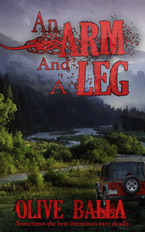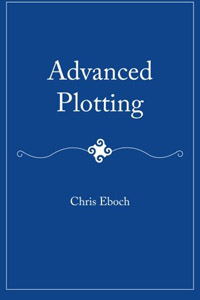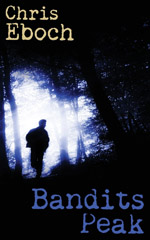by Olive Balla
 According to author, editor, and writing consultant Jeff Gerke there are two kinds of writers—I call them Plotters and Character-philes. No, this has nothing to do with politics. It has to do with how our brains are wired. Gerke says fiction writers will be good at either crafting a complex, multi-stranded plot, or building deep, multi-faceted and interesting characters, but not both. With that in mind, and in the interest of helping my fellow Plotters thicken the portion of their cerebral cortexes wherein their Character-philes lie dormant, I submit some tidbits I’ve picked up.
According to author, editor, and writing consultant Jeff Gerke there are two kinds of writers—I call them Plotters and Character-philes. No, this has nothing to do with politics. It has to do with how our brains are wired. Gerke says fiction writers will be good at either crafting a complex, multi-stranded plot, or building deep, multi-faceted and interesting characters, but not both. With that in mind, and in the interest of helping my fellow Plotters thicken the portion of their cerebral cortexes wherein their Character-philes lie dormant, I submit some tidbits I’ve picked up.
By the time we reach the age of twenty or so, all of us will have developed psychological, mental, spiritual, and even physical battle scars, along with the mechanisms for coping with them. And by the time we’ve put a few decades under our belt, we’re as bent and dented as any used vehicle on a second-rate car lot. Gerke’s message is to embrace your hard-earned dings. Exorcise your ghosts through your characters. For example, show your protagonist struggling to survive a tumultuous relationship with her mother, father, or even her boyfriend’s obnoxious cat. Or better yet, show your antagonist’s inner turmoil over an action he’s taken, or is about to take. Readers love delving into the dichotomy of good versus evil that apparently resides in every human being, so heap the internal conflict high.
Got any phobias? How about a couple of recalcitrant neuroses? Do you engage in obsessive compulsive rituals or carry a load of guilt over youthful—or even recent—indiscretions? Good. Confession time: One such incident from my past became the basis for my essay “The Four People I DON’T Want to See in Heaven.” Here’s an excerpt:
Then there’s the dynamic known in psychological circles as the Normalcy Bias. How many horror or suspense movies have we watched where a female character hears a noise from the basement and proceeds to check it out? We in the audience know it’s a bad idea, but the character is a victim of the too-human characteristic that whispers in her ear, “Nothing bad has ever happened before when you went into the basement, so nothing bad will happen now.” The ways to enhance your characters through use of this it-can’t-happen-here trait are endless. For example, does the mother watching her toddler play in the park realize that the handsome young gentleman who seems to turn up everywhere is actually stalking her? Of course not, it has to be a coincidence. Or do the villagers who live at the foot of an active volcano fear imminent destruction? Poppycock. The thing has been spewing smoke and cinders for decades. Go to sleep children, all is well.
And how about fear? We humans harbor fears-a-plenty. We’re born with the fear of abandonment, and then proceed to pile up more terrors over our lifetimes. We fear people, places, situations, the future, insects, certain animals, etc. Haul out your own fears. Hold them up to the light, and then bless your characters with a fistful. Someone said that readers look to writers to help them discover ways of dealing with their own life issues. So scare the bejeebers out of your readers, and then lead them to safety—or not. Either way, they’ll love you for it.
Then there’s the human ability to survive through adaptation. It’s the process by which the bizarre becomes the norm. If an action is repeated often enough and over a long enough period of time—even if it involves horrifying or twisted behavior—the people who witness it, or even those who are victims of it, adapt to it. They may not like it on some level, but they will eventually not only accept that behavior, but embrace and even mirror it. It’s part of our arsenal of survival strategies. Tough and resilient characters, anyone?
Ah, the human condition. Time to turn your lemons into lemonade.
 Olive Balla, author of suspense novel An Arm and a Leg, is mother of 3, grandmother to 13, great-grandmother of 4, a retired educator, and part-time professional musician. Having been everything from secretary at a used car dealership, a university student, and a high school Spanish teacher, Balla states her characters are, in part, amalgamations of people she’s met. Living with her husband Victor in the Albuquerque area, she spends her spare time in a small woodworking shop designing and building everything from breadboxes and wine racks, to a porch bench. Visit her website at omballa.com.
Olive Balla, author of suspense novel An Arm and a Leg, is mother of 3, grandmother to 13, great-grandmother of 4, a retired educator, and part-time professional musician. Having been everything from secretary at a used car dealership, a university student, and a high school Spanish teacher, Balla states her characters are, in part, amalgamations of people she’s met. Living with her husband Victor in the Albuquerque area, she spends her spare time in a small woodworking shop designing and building everything from breadboxes and wine racks, to a porch bench. Visit her website at omballa.com.
This article was originally published in the December 2013 issue of SouthWest Sage and is reprinted here by permission of the author.



